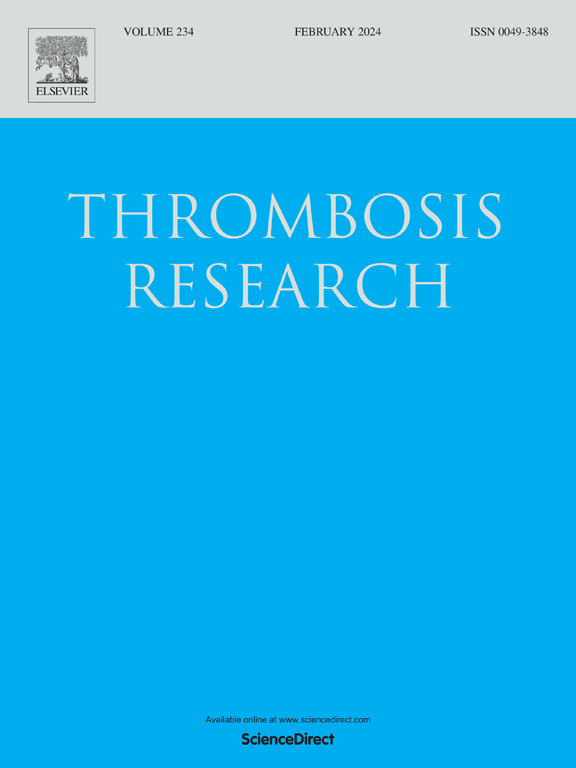Platelet count trajectory patterns and prognosis in critically ill patients with thrombocytopenia: Based on latent growth mixture model analysis
IF 3.7
3区 医学
Q1 HEMATOLOGY
引用次数: 0
Abstract
Background
The role of longitudinal platelet count trajectories in critically ill patients with thrombocytopenia is unclear. This study aimed to identify the association between trajectory patterns and prognosis and assess whether these patterns could enhance the predictive capability of Acute Physiology and Chronic Health Evaluation (APACHE) IV or Sequential Organ Failure Assessment (SOFA) scores for mortality.
Methods
This retrospective cohort study employed latent growth mixture modeling (LGMM) to identify platelet count trajectory patterns. Cox proportional hazards model was used to evaluate the association between the patterns and mortality. Receiver Operating Characteristic (ROC) curves were plotted, and the areas under the curves (AUCs) were compared between models using the APACHE IV or SOFA score alone and those incorporating trajectory patterns.
Results
A total of 1683 patients from the eICU Collaborative Research Database (eICU-CRD) and 931 patients from the Medical Information Mart for Intensive Care IV (MIMIC-IV) database were included. Two trajectory patterns were identified: Class 1, characterized by “Gradual increase,” and Class 2, with “Persistent low.” Patients in Class 2 had higher ICU mortality (eICU-CRD: 2.273[1.457–3.546]; MIMIC-IV database: 1.991[1.162–3.412]). Incorporating trajectory patterns into the APACHE IV or SOFA scores substantially enhanced the AUC of these scoring systems alone in predicting ICU mortality (eICU-CRD: P < 0.001; MIMIC-IV database: P = 0.0018).
Conclusion
The longitudinal platelet count trajectory patterns are complementary predictors of survival in critically ill patients with thrombocytopenia. Persistently low platelet counts are significantly associated with unfavorable clinical outcomes.
求助全文
约1分钟内获得全文
求助全文
来源期刊

Thrombosis research
医学-外周血管病
CiteScore
14.60
自引率
4.00%
发文量
364
审稿时长
31 days
期刊介绍:
Thrombosis Research is an international journal dedicated to the swift dissemination of new information on thrombosis, hemostasis, and vascular biology, aimed at advancing both science and clinical care. The journal publishes peer-reviewed original research, reviews, editorials, opinions, and critiques, covering both basic and clinical studies. Priority is given to research that promises novel approaches in the diagnosis, therapy, prognosis, and prevention of thrombotic and hemorrhagic diseases.
 求助内容:
求助内容: 应助结果提醒方式:
应助结果提醒方式:


